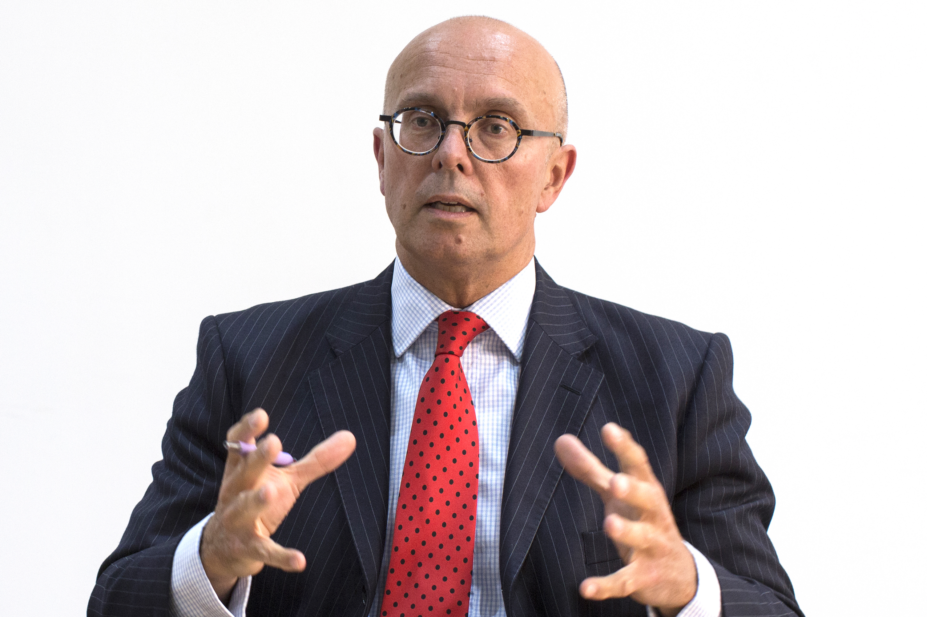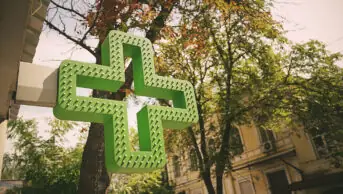
Jeff Gilbert
Simon Dukes had a lot to prove when he took the top job at the Pharmaceutical Services Negotiating Committee (PSNC) in May 2018.
Relations with the government were in the deep freeze following a bruising — and ultimately unsuccessful— judicial review of the Department of Health and Social Care’s (DHSC) decision to cut funding for community pharmacy in 2016.
In this environment, perhaps achieving a new five-year deal for the sector, which began on 1 October 2019, should be regarded as a win. Certainly, the new urgent care referral service — the NHS community pharmacist consultation service (CPCS)— will position community pharmacy firmly at the front door of the health service and a slew of pilot projects are also planned for new clinical services. The sector feels like it is finally moving forward.
However, overall funding is frozen at £2.6bn per year, with no allowances for inflation or rising staff costs. At the same time, the DHSC still maintains there are too many pharmacies clustered in some areas and that efficiencies — such as centralised or ‘hub-and-spoke’ dispensing— will enable it to reduce dispensing fees.
The Pharmaceutical Journal met with Dukes after serious questions were raised around the overall sustainability of the changes for community pharmacy. And, fortunately, he was keen to answer them.
There are several details within the contractual framework … which weren’t part of the proposal in the first instance
What challenges did you face to secure this deal?
What was becoming clear was that the Treasury had already hammered the DHSC and NHS England, and there was very little wriggle room. But there are several details within the contractual framework, which we fought for and won, that weren’t part of the proposal in the first instance.
Will the annual reviews of the contract mean we will see more funding become available?
It depends on the economic environment, the political situation and our ability to deliver on what we’ve been asked to do the year before. Dependent on those three things, then we must stand a chance.
The Pharmaceutical Services Negotiating Committee has said contractors are £6,000 better off than they would have been without the deal. Can you explain where that figure came from?
That is based on two things. The first is that we know that from the documents released in the judicial review process, and some of the comments in NHS England board papers, that NHS England had anticipated a £33m reduction in the overall sum for 2018/2019 and a similar reduction for 2019/2020. It was around about £6,000 per contractor per annum.
How far will that extra £6,000 go towards ensuring that pharmacies won’t close?
Well it’s not extra and that’s the point. We battled hard for an increase in the overall sum because the unsustainable measures that pharmacies are using to stay afloat is painful to watch. I have the utmost sympathy for those businesses, trying to sustain themselves through more loans, putting their savings into their businesses, cutting staff hours and cutting staff numbers. It’s unsustainable. We need to ensure that is recognised in the overall sum in terms of the years ahead. But the Treasury was not willing to listen to that argument. We are very aware indeed of the financial pressures.
We haven’t modelled it, but the money that we have prevented from being removed would have exacerbated the pain that pharmacies are under and inevitably, would have, perhaps increased the speed with which some contractors go out of business.
Have you modelled how pharmacies will be impacted by the funding package as it is?
Of course.
The government is still of the view that there are too many pharmacies, but they are not prepared to have a discussion on how we should deal with that
How many pharmacies do you expect will close as a result?
We’ll be producing our indicative tables as soon as we’ve got all the data together. And then it will be for individual contractors to look at those tables in the light of their own specific businesses. It’s clear that the government is still of the view that there are too many pharmacies, but they are not prepared to have a discussion on how we should deal with that, if that is the case.
Why are they not willing to have that discussion?
Because that would immediately elicit the response from us: “If you think there are too many, what’s the right number?”. That would mean helping us to ensure that some businesses, who want to, can exit the market. That’s not a conversation that I believe the government wants to or can have. I think its hands are tied in some respects. As we’ve seen with much larger businesses, such as Thomas Cook [which went into liquidation in September 2019], there is a lack of willingness to put money into private sector businesses to reduce the angle of decline.
But throughout the contract, pharmacy is touted as the new front door of the NHS. How would closures impact the profession’s accessibility?
The government would say there are some areas that are well served through “clustering”, but how can we possibly say what the right number of community pharmacies is when we’ve got — according to NHS figures — up to 20 million appointments that could be freed up from general practice and that need to go to community pharmacy?
We don’t have a sense yet of what demand looks like for the CPCS or indeed the number of clinical services pilots that are referenced in the overall framework document. So, it’s impossible to answer that question.
But with 20 million GP appointments to free up, what implications will that have on workload in pharmacies?
The lack of capacity really concerns me. No matter how much money we may have, if you haven’t got the minutes in the day to do it, it’s not going to happen. I’m really concerned about how we can find that capacity to conduct the services that NHS England wants us to do. Not just through the CPCS, but also through the clinical service pilots that are being lined up as well.
How confident is the Pharmaceutical Services Negotiating Committee that the new consultation service will provide enough funding to cover the other areas where funding has been cut from the contract?
The amount of money allocated and the referrals from NHS 111 will be relatively small. It is the referrals from GP practices that will be the game changer. This will have an impact on how patients view pharmacy and we will see an increase in patients turning up to their local community pharmacy to be treated rather than going through a referral process. The challenge for us now is ensuring that we’re capturing how many people just walk in, as opposed to in 12 months’ time. I think those numbers are going to be significantly higher.
Are you concerned about the prospect of pharmacists moving from community pharmacy to primary care networks?
There’s a shortage of pharmacists generally, certainly in community pharmacy. Whether that’s because they’re all going into primary care network (PCN) type roles, I don’t know. But the future of effective community pharmacy and the future of the CPCS is all about PCNs, so community pharmacies have to engage with them. That’s going to be bloody difficult for a lot of them because of the way community pharmacies are structured and the way they compete. But it’s not impossible.
Why did the Pharmaceutical Services Negotiating Committee agree to discuss implementing a hub-and-spoke model?
What became clear through the negotiation process was that the government would proceed with legislative change around the hub-and spoke model and how it can be implemented. On that basis, I felt that we either stand on the sidelines and watch it, or we influence and steer that dialogue.
Has the Pharmaceutical Services Negotiating Committee seen any evidence for the efficacy of this model?
No. Organisations with a hub-and-spoke system would probably say that there are time-saving elements to it. But does it save money? I don’t think any of us have seen evidence that it will. If there’s no money to be saved, then the market’s not going to take it up.
How will pharmacies be chosen for the various pilots outlined in the contract?
They’ve been chosen by the NHS in the past. We would be keen for more transparency about that process. I’m in discussions with the other pharmacy bodies about how we can make sure that we have the widest mix of pharmacies who want to get involved, and it may be that we use local pharmaceutical committees in order to get potential candidates.
What would that mean for the equitable distribution of the funding attached to those pilots? Will it essentially be choosing which pharmacies can thrive?
If you are conducting a pilot purely for the money, which I don’t think many community pharmacies are, then I think you will probably struggle to give it the time and effort that pilot requires.


